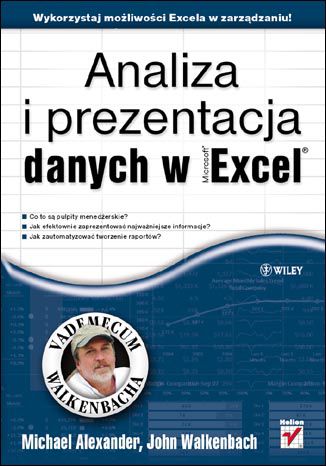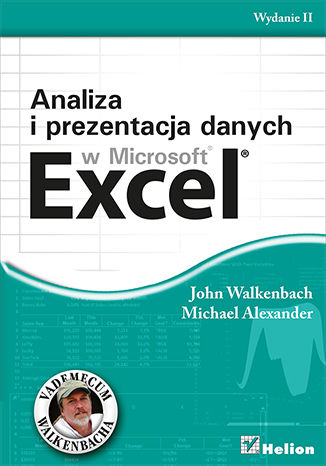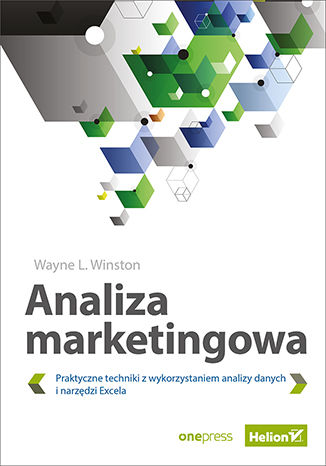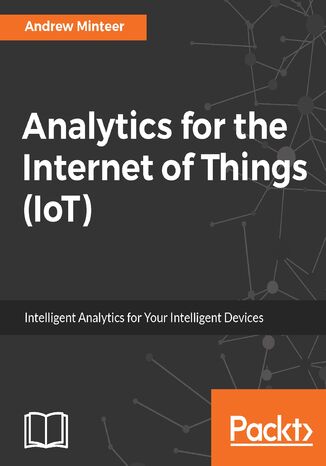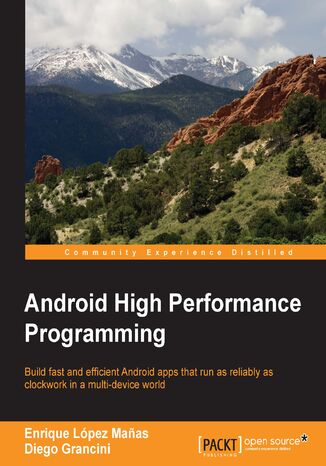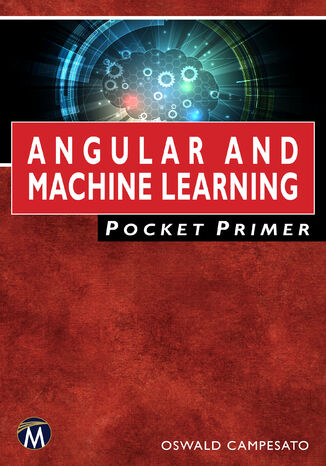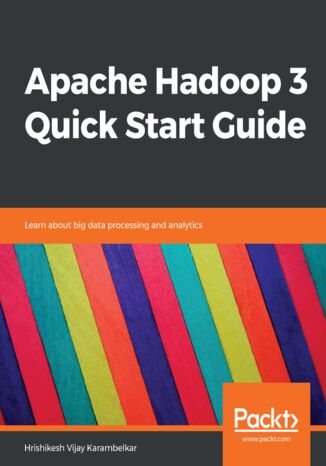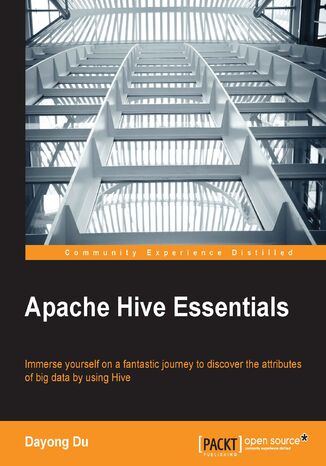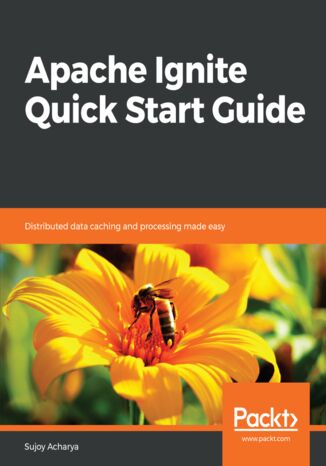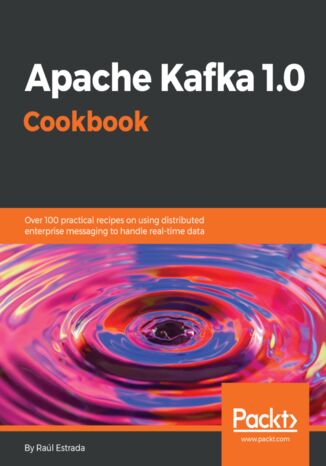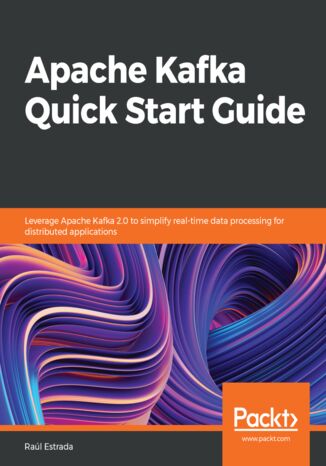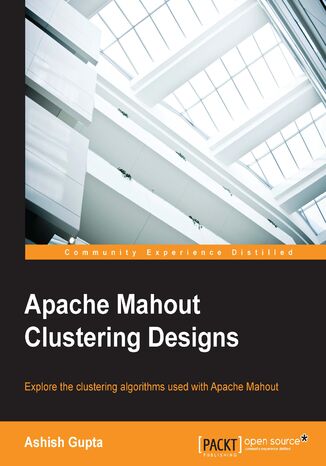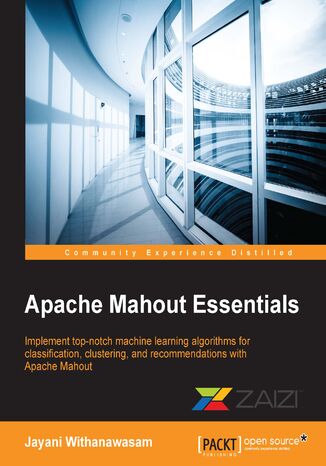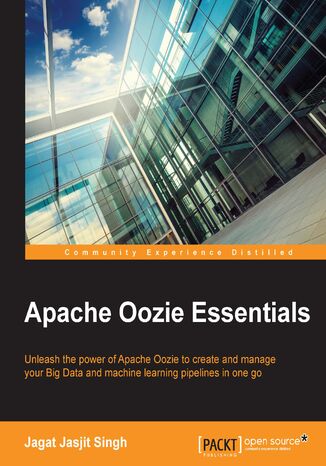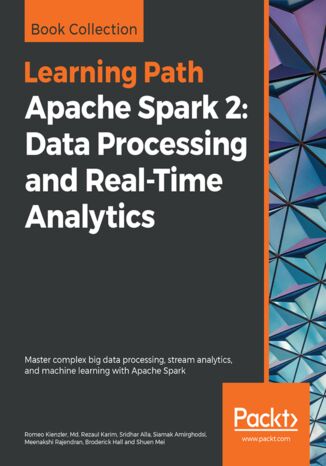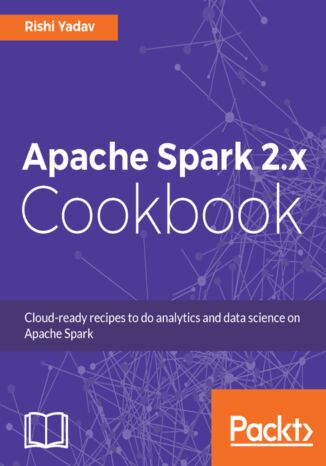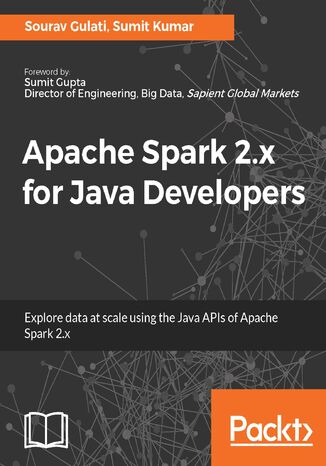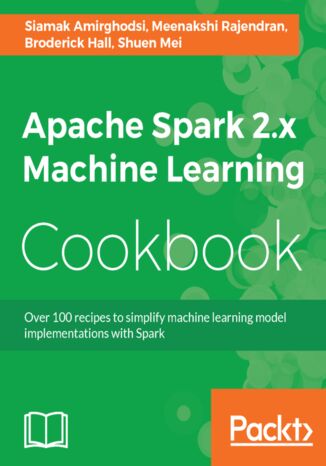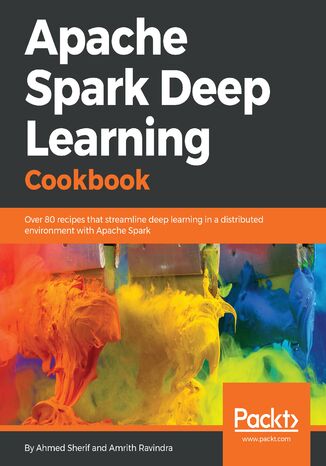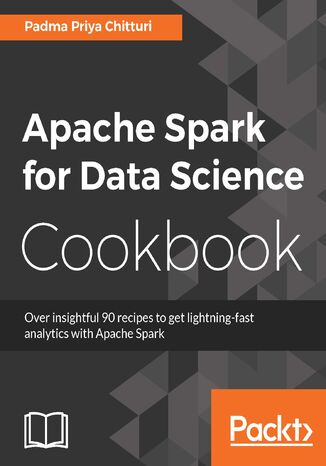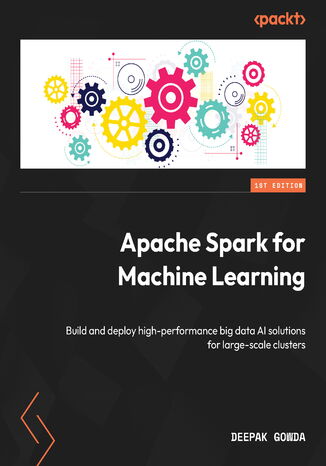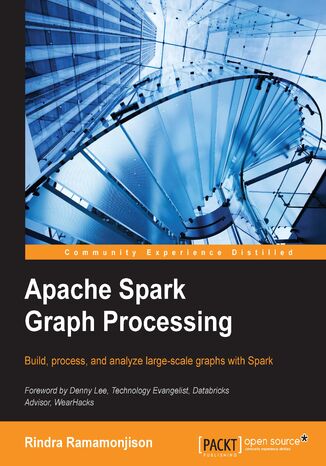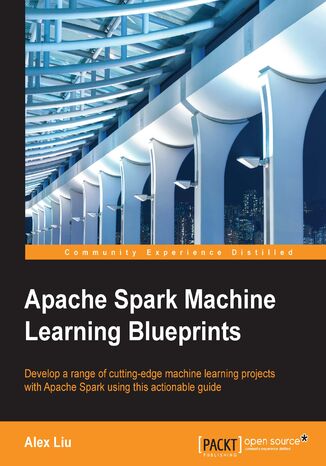Kategorien
E-Books
-
Wirtschaft
- Bitcoin
- Geschäftsfrau
- Coaching
- Controlling
- E-Business
- Ökonomie
- Finanzen
- Börse und Investitionen
- Persönliche Kompetenzen
- Computer im Büro
- Kommunikation und Verhandlungen
- Kleines Unternehmen
- Marketing
- Motivation
- Multimedia-Training
- Immobilien
- Überzeugung und NLP
- Steuern
- Sozialpolitik
- Handbȕcher
- Präsentationen
- Führung
- Public Relation
- Berichte, Analysen
- Geheimnis
- Social Media
- Verkauf
- Start-up
- Ihre Karriere
- Management
- Projektmanagement
- Personal (HR)
-
Für Kinder
-
Für Jugendliche
-
Bildung
-
Enzyklopädien, Wörterbücher
-
E-Presse
- Architektura i wnętrza
- Sicherheit und Gesundheit am Arbeitsplatz
- Biznes i Ekonomia
- Haus und Garten
- E-Business
- Ekonomia i finanse
- Esoterik
- Finanzen
- Persönliche Finanzen
- Unternehmen
- Fotografie
- Informatik
- HR und Gehaltsabrechnung
- Frauen
- Computer, Excel
- Buchhaltung
- Kultur und Literatur
- Wissenschaftlich und akademisch
- Umweltschutz
- meinungsbildend
- Bildung
- Steuern
- Reisen
- Psychologie
- Religion
- Landwirtschaft
- Buch- und Pressemarkt
- Transport und Spedition
- Gesundheit und Schönheit
-
Geschichte
-
Informatik
- Office-Programme
- Datenbank
- Bioinformatik
- IT Branche
- CAD/CAM
- Digital Lifestyle
- DTP
- Elektronik
- Digitale Fotografie
- Computergrafik
- Spiele
- Hacking
- Hardware
- IT w ekonomii
- Wissenschaftliche Pakete
- Schulbücher
- Computergrundlagen
- Programmierung
- Mobile-Programmierung
- Internet-Server
- Computernetzwerke
- Start-up
- Betriebssysteme
- Künstliche Inteligenz
- Technik für Kinder
- Webmaster
-
Andere
-
Fremdsprachen lernen
-
Kultur und Kunst
-
Lektüre
-
Literatur
- Anthologien
- Ballade
- Biografien und Autobiografien
- Für Erwachsene
- Drama
- Tagebücher, Memoiren, Briefe
- Epos
- Essay
- Science Fiction
- Felietonys
- Fiktion
- Humor, Satire
- Andere
- Klassisch
- Krimi
- Sachbücher
- Belletristik
- Mity i legendy
- Nobelpreisträger
- Kurzgeschichten
- Gesellschaftlich
- Okultyzm i magia
- Erzählung
- Erinnerungen
- Reisen
- Gedicht
- Poesie
- Politik
- Populärwissenschaftlich
- Roman
- Historischer Roman
- Prosa
- Abenteuer
- Journalismus
- Reportage
- Romans i literatura obyczajowa
- Sensation
- Thriller, Horror
- Interviews und Erinnerungen
-
Naturwissenschaften
-
Sozialwissenschaften
-
Schulbücher
-
Populärwissenschaft und akademisch
- Archäologie
- Bibliotekoznawstwo
- Filmwissenschaft
- Philologie
- Polnische Philologie
- Philosophie
- Finanse i bankowość
- Erdkunde
- Wirtschaft
- Handel. Weltwirtschaft
- Geschichte und Archäologie
- Kunst- und Architekturgeschichte
- Kulturwissenschaft
- Linguistik
- Literaturwissenschaft
- Logistik
- Mathematik
- Medizin
- Geisteswissenschaften
- Pädagogik
- Lehrmittel
- Populärwissenschaftlich
- Andere
- Psychologie
- Soziologie
- Theatrologie
- Teologie
- Theorien und Wirtschaftswissenschaften
- Transport i spedycja
- Sportunterricht
- Zarządzanie i marketing
-
Handbȕcher
-
Spielanleitungen
-
Professioneller und fachkundige Leitfaden
-
Jura
- Sicherheit und Gesundheit am Arbeitsplatz
- Geschichte
- Verkehrsregeln. Führerschein
- Rechtswissenschaften
- Gesundheitswesen
- Allgemeines. Wissenskompendium
- akademische Bücher
- Andere
- Bau- und Wohnungsrecht
- Zivilrecht
- Finanzrecht
- Wirtschaftsrecht
- Wirtschafts- und Handelsrecht
- Strafrecht
- Strafrecht. Kriminelle Taten. Kriminologie
- Internationales Recht
- Internationales und ausländisches Recht
- Gesundheitsschutzgesetz
- Bildungsrecht
- Steuerrecht
- Arbeits- und Sozialversicherungsrecht
- Öffentliches, Verfassungs- und Verwaltungsrecht
- Familien- und Vormundschaftsrecht
- Agrarrecht
- Sozialrecht, Arbeitsrecht
- EU-Recht
- Industrie
- Agrar- und Umweltschutz
- Wörterbücher und Enzyklopädien
- Öffentliche Auftragsvergabe
- Management
-
Führer und Reisen
- Afrika
- Alben
- Südamerika
- Mittel- und Nordamerika
- Australien, Neuseeland, Ozeanien
- Österreich
- Asien
- Balkan
- Naher Osten
- Bulgarien
- China
- Kroatien
- Tschechische Republik
- Dänemark
- Ägypten
- Estland
- Europa
- Frankreich
- Berge
- Griechenland
- Spanien
- Niederlande
- Island
- Litauen
- Lettland
- Mapy, Plany miast, Atlasy
- Miniführer
- Deutschland
- Norwegen
- Aktive Reisen
- Polen
- Portugal
- Andere
- Przewodniki po hotelach i restauracjach
- Russland
- Rumänien
- Slowakei
- Slowenien
- Schweiz
- Schweden
- Welt
- Türkei
- Ukraine
- Ungarn
- Großbritannien
- Italien
-
Psychologie
- Lebensphilosophien
- Kompetencje psychospołeczne
- zwischenmenschliche Kommunikation
- Mindfulness
- Allgemeines
- Überzeugung und NLP
- Akademische Psychologie
- Psychologie von Seele und Geist
- Arbeitspsychologie
- Relacje i związki
- Elternschafts- und Kinderpsychologie
- Problemlösung
- Intellektuelle Entwicklung
- Geheimnis
- Sexualität
- Verführung
- Aussehen ind Image
- Lebensphilosophien
-
Religion
-
Sport, Fitness, Diäten
-
Technik und Mechanik
Hörbücher
-
Wirtschaft
- Bitcoin
- Geschäftsfrau
- Coaching
- Controlling
- E-Business
- Ökonomie
- Finanzen
- Börse und Investitionen
- Persönliche Kompetenzen
- Kommunikation und Verhandlungen
- Kleines Unternehmen
- Marketing
- Motivation
- Immobilien
- Überzeugung und NLP
- Steuern
- Sozialpolitik
- Handbȕcher
- Präsentationen
- Führung
- Public Relation
- Geheimnis
- Social Media
- Verkauf
- Start-up
- Ihre Karriere
- Management
- Projektmanagement
- Personal (HR)
-
Für Kinder
-
Für Jugendliche
-
Bildung
-
Enzyklopädien, Wörterbücher
-
E-Presse
-
Geschichte
-
Informatik
-
Andere
-
Fremdsprachen lernen
-
Kultur und Kunst
-
Lektüre
-
Literatur
- Anthologien
- Ballade
- Biografien und Autobiografien
- Für Erwachsene
- Drama
- Tagebücher, Memoiren, Briefe
- Epos
- Essay
- Science Fiction
- Felietonys
- Fiktion
- Humor, Satire
- Andere
- Klassisch
- Krimi
- Sachbücher
- Belletristik
- Mity i legendy
- Nobelpreisträger
- Kurzgeschichten
- Gesellschaftlich
- Okultyzm i magia
- Erzählung
- Erinnerungen
- Reisen
- Poesie
- Politik
- Populärwissenschaftlich
- Roman
- Historischer Roman
- Prosa
- Abenteuer
- Journalismus
- Reportage
- Romans i literatura obyczajowa
- Sensation
- Thriller, Horror
- Interviews und Erinnerungen
-
Naturwissenschaften
-
Sozialwissenschaften
-
Populärwissenschaft und akademisch
- Archäologie
- Philosophie
- Wirtschaft
- Handel. Weltwirtschaft
- Geschichte und Archäologie
- Kunst- und Architekturgeschichte
- Kulturwissenschaft
- Literaturwissenschaft
- Mathematik
- Medizin
- Geisteswissenschaften
- Pädagogik
- Lehrmittel
- Populärwissenschaftlich
- Andere
- Psychologie
- Soziologie
- Teologie
- Zarządzanie i marketing
-
Handbȕcher
-
Professioneller und fachkundige Leitfaden
-
Jura
-
Führer und Reisen
-
Psychologie
- Lebensphilosophien
- zwischenmenschliche Kommunikation
- Mindfulness
- Allgemeines
- Überzeugung und NLP
- Akademische Psychologie
- Psychologie von Seele und Geist
- Arbeitspsychologie
- Relacje i związki
- Elternschafts- und Kinderpsychologie
- Problemlösung
- Intellektuelle Entwicklung
- Geheimnis
- Sexualität
- Verführung
- Aussehen ind Image
- Lebensphilosophien
-
Religion
-
Sport, Fitness, Diäten
-
Technik und Mechanik
Videokurse
-
Datenbank
-
Big Data
-
Biznes, ekonomia i marketing
-
Cybersicherheit
-
Data Science
-
DevOps
-
Für Kinder
-
Elektronik
-
Grafik / Video / CAX
-
Spiele
-
Microsoft Office
-
Entwicklungstools
-
Programmierung
-
Persönliche Entwicklung
-
Computernetzwerke
-
Betriebssysteme
-
Softwaretest
-
Mobile Geräte
-
UX/UI
-
Web development
-
Management
Podcasts
- E-Books
- Informatik
- IT Branche
IT Branche
Online-Bücher in der Kategorie IT Business helfen Ihnen dabei, technische Probleme wie Datenanalyse, Blockchain oder Programmierung zu vertiefen. Hier finden Sie auch großartige Einträge zur Internetwerbung und zur erfolgreichen Führung eines Online-Geschäfts im Allgemeinen. Sie besprechen beispielsweise, wie Marketingdaten analysiert und eine gute Beziehung zum Kunden aufgebaut werden können.
Analiza danych w biznesie. Sztuka podejmowania skutecznych decyzji
Wyciągaj trafne wnioski! Posiadanie zbiorów danych to połowa sukcesu. Druga połowa to umiejętność ich skutecznej analizy i wyciągania wniosków! Dopiero na tej podstawie będziesz w stanie właściwie ocenić kondycję Twojej firmy oraz podjąć słuszne decyzje. Wiedza zawarta w tej książce może zadecydować o sukcesie biznesowym lub porażce. Nie ryzykuj i sięgnij po to doskonałe źródło wiedzy, poświęcone nauce o danych. To unikalny podręcznik, który pomoże Ci sprawnie opanować nawet najtrudniejsze zagadnienia związane z analizą danych. Dowiedz się, jak zbudowany jest proces eksploracji danych, z jakich narzędzi możesz skorzystać oraz jak stworzyć model predykcyjny i dopasować go do danych. W kolejnych rozdziałach przeczytasz o tym, czym grozi nadmierne dopasowanie modelu i jak go unikać oraz jak wyciągać wnioski metodą najbliższych sąsiadów. Na koniec zaznajomisz się z możliwościami wizualizacji skuteczności modelu oraz odkryjesz związek pomiędzy nauką o danych a strategią biznesową. To obowiązkowa lektura dla wszystkich osób chcących podejmować świadome decyzje na podstawie posiadanych danych! Dzięki tej książce: poznasz model predykcyjny dowiesz się, jak dopasować model do danych zwizualizujesz skuteczność zbudowanego modelu zwiększysz swoje szanse na osiągnięcie sukcesu biznesowego! Przeanalizuj posiadane dane i podejmij trafne decyzje!
Analiza i prezentacja danych w Microsoft Excel. Vademecum Walkenbacha
John Walkenbach, Michael Alexander
Wykorzystaj możliwości Excela w zarządzaniu! Co to są pulpity menedżerskie? Jak efektownie zaprezentować najważniejsze informacje? Jak zautomatyzować tworzenie raportów? Excel to niezastąpione narzędzie, jeżeli musisz przetworzyć setki, tysiące, a nawet miliony danych. Od wielu lat obecny na rynku, program ten dzięki intuicyjnemu interfejsowi użytkownika, ogromnym możliwościom oraz rozsądnej cenie zdobył popularność w zasadzie w każdym środowisku - począwszy od akademickiego, a skończywszy na menedżerach i prezesach. Ta książka przeznaczona jest dla tej drugiej grupy. Ciągły napływ nowych informacji w świecie biznesu sprawia, że są one trudne do ogarnięcia. Z pomocą przychodzą pulpity menedżerskie! Dzięki tej książce dowiesz się, jak je stworzyć oraz wyłuskać najistotniejsze informacje z morza danych. W trakcie lektury nauczysz się analizować i przedstawiać w użytecznej formie dostępne dane, korzystać z metod szybkiej prezentacji oraz automatyzować procesy raportowania i tworzyć przyciągające wzrok prezentacje. Ponadto biegle opanujesz korzystanie z tabel i wykresów przestawnych oraz tworzenie zaawansowanych komponentów do prezentacji tendencji czy oceny efektywności realizacji celów. Jest to idealna książka dla każdego menedżera tonącego w gąszczu danych! Definicja pulpitów menedżerskich Określanie wymagań użytkowników Zasady projektowania pulpitów menedżerskich Projektowanie modelu danych Wykresy w programie Microsoft Excel Wykorzystanie tabel przestawnych Tworzenie wykresów przestawnych Wykresy przebiegu w czasie Inne techniki wizualizacji danych Tworzenie komponentów do prezentacji tendencji i grupowania danych Prezentacja efektywności realizacji celów Wykorzystanie makr w raportach Dodawanie interaktywnych kontrolek do pulpitu menedżerskiego Importowanie danych z Microsoft Access Metody bezpiecznego współdzielenia danych Uporządkuj i efektownie zaprezentuj najważniejsze informacje!
Analiza i prezentacja danych w Microsoft Excel. Vademecum Walkenbacha. Wydanie II
John Walkenbach, Michael Alexander
Wykorzystaj możliwości Excela w zarządzaniu! Jeżeli masz przed sobą setki, a może tysiące lub miliony danych, z których chcesz wyciągnąć celne wnioski, potrzebujesz narzędzia, które pomoże Ci to ogarnąć. Mowa oczywiście o Excelu. Nieważne, kim jesteś - studentem, księgowym, menedżerem czy prezesem - na 100% docenisz drzemiący w nim potencjał! Dzięki tej książce dowiesz się, jak wyłuskać najistotniejsze informacje z morza danych. W trakcie lektury nauczysz się błyskawicznie przygotowywać raporty oraz prezentacje. Przekonasz się, że tabele przestawne wcale nie muszą być takie straszne, oraz zobaczysz najlepsze techniki prezentacji tendencji czy oceny efektywności w realizacji celów. Kolejne wydanie książki zostało zaktualizowane, ulepszone i rozszerzone o mnóstwo nowych, przydatnych wiadomości. Dowiesz się, jak importować dane z bazy SQL Server oraz jak wykorzystać możliwości dodatku Power View. Książka ta jest idealną pozycją dla tonących w gąszczu danych! Dzięki tej książce: poznasz narzędzia Excela w zakresie analizy i prezentacji danych opanujesz najlepsze techniki projektowania tabel przygotujesz czytelne raporty wykorzystasz w pełni możliwości Excela Uratuj się z morza danych!
Analiza marketingowa. Praktyczne techniki z wykorzystaniem analizy danych i narzędzi Excela
Specjaliści w dziedzinie marketingu coraz częściej sięgają po wyrafinowane metody analizy. Obecnie firmy są zalewane ogromną ilością danych - skorzystanie z płynącej z nich wiedzy jest znakomitą szansą na poprawę kondycji przedsiębiorstwa. W tym celu trzeba dane zebrać, przetworzyć i poddać analizie. Potrzebne więc są narzędzia, najlepiej proste w użytkowaniu i powszechnie znane. Takim właśnie narzędziem jest arkusz kalkulacyjny MS Excel - potężna i wszechstronna aplikacja, dzięki której nawet bez specjalistycznej wiedzy można wykonać profesjonalną analizę marketingową i zdobyć mnóstwo przydatnych informacji. Ta książka powstała na bazie autorskiego kursu analizy marketingowej dla słuchaczy studiów MBA. Pokazuje, jak wykorzystywać Excela do modelowania danych i pozyskiwania wiedzy niezbędnej do kreowania skutecznego marketingu w firmie. Niemal wszystkie pojęcia wyjaśniono na przykładach, a sposób wykonania ćwiczeń pokazano krok po kroku. Do książki dołączono pliki z danymi i rozwiązaniami zadań. Dowiesz się, jak przetwarzać dane za pomocą wykresów, wyznaczać krzywe popytu, prowadzić analizę skupień w segmentach rynku oraz tworzyć indywidualne modele danych i prognozować wpływ akcji marketingowych na wzrost sprzedaży. Oznacza to, że aby zdobyć umiejętności analizy marketingowej, potrzebujesz tylko tego podręcznika i Excela! W tej książce między innymi: analiza danych marketingowych opracowywanie strategii najbardziej zyskownych wycen wykorzystywanie narzędzi prognostycznych analiza łączona i analiza wyborów dyskretnych pomiar skuteczności wydatków na reklamę analiza danych z mediów społecznościowych Wyrafinowane analizy biznesowe? Potrzebujesz tylko Excela!
Analytics for the Internet of Things (IoT). Intelligent analytics for your intelligent devices
We start with the perplexing task of extracting value from huge amounts of barely intelligible data. The data takes a convoluted route just to be on the servers for analysis, but insights can emerge through visualization and statistical modeling techniques. You will learn to extract value from IoT big data using multiple analytic techniques. Next we review how IoT devices generate data and how the information travels over networks. You’ll get to know strategies to collect and store the data to optimize the potential for analytics, and strategies to handle data quality concerns. Cloud resources are a great match for IoT analytics, so Amazon Web Services, Microsoft Azure, and PTC ThingWorx are reviewed in detail next. Geospatial analytics is then introduced as a way to leverage location information. Combining IoT data with environmental data is also discussed as a way to enhance predictive capability. We’ll also review the economics of IoT analytics and you’ll discover ways to optimize business value.By the end of the book, you’ll know how to handle scale for both data storage and analytics, how Apache Spark can be leveraged to handle scalability, and how R and Python can be used for analytic modeling.
Android High Performance Programming. Click here to enter text
Emil Atanasov, Enrique López Manas, Diego Grancini
Performant applications are one of the key drivers of success in the mobile world. Users may abandon an app if it runs slowly. Learning how to build applications that balance speed and performance with functionality and UX can be a challenge; however, it's now more important than ever to get that balance right.Android High Performance will start you thinking about how to wring the most from any hardware your app is installed on, so you can increase your reach and engagement. The book begins by providing an introduction to state–of-the-art Android techniques and the importance of performance in an Android application. Then, we will explain the Android SDK tools regularly used to debug and profile Android applications. We will also learn about some advanced topics such as building layouts, multithreading, networking, and security. Battery life is one of the biggest bottlenecks in applications; and this book will show typical examples of code that exhausts battery life, how to prevent this, and how to measure battery consumption from an application in every kind of situation to ensure your apps don’t drain more than they should.This book explains techniques for building optimized and efficient systems that do not drain the battery, cause memory leaks, or slow down with time.
Mercury Learning and Information, Oswald Campesato
As part of the best-selling *Pocket Primer* series, this book introduces readers to basic machine learning concepts and integrates them into Angular applications. It offers a fast-paced introduction to essential machine learning features and an overview of popular classifiers. Covering Angular functionality, basic machine learning concepts, and key classification algorithms, the book includes numerous code samples and figures. Topics such as TensorFlow and Keras are also explored.The book begins with a quick introduction to Angular, followed by UI controls, user input, and forms and services. As you progress, you will delve into machine learning, working with classifiers, and integrating TensorFlow.js with Angular. These foundational topics ensure a comprehensive grasp of both Angular and machine learning principles, equipping you with practical skills for developing sophisticated applications.Understanding these concepts is crucial for enhancing Angular projects with machine learning capabilities. This book transitions you from a novice to a proficient developer, equipped with the knowledge and tools needed to create advanced applications. Companion files with source code and color figures enhance the learning experience, making this book an invaluable resource for integrating machine learning with Angular.
Apache Hadoop 3 Quick Start Guide. Learn about big data processing and analytics
Apache Hadoop is a widely used distributed data platform. It enables large datasets to be efficiently processed instead of using one large computer to store and process the data. This book will get you started with the Hadoop ecosystem, and introduce you to the main technical topics, including MapReduce, YARN, and HDFS.The book begins with an overview of big data and Apache Hadoop. Then, you will set up a pseudo Hadoop development environment and a multi-node enterprise Hadoop cluster. You will see how the parallel programming paradigm, such as MapReduce, can solve many complex data processing problems.The book also covers the important aspects of the big data software development lifecycle, including quality assurance and control, performance, administration, and monitoring. You will then learn about the Hadoop ecosystem, and tools such as Kafka, Sqoop, Flume, Pig, Hive, and HBase. Finally, you will look at advanced topics, including real time streaming using Apache Storm, and data analytics using Apache Spark. By the end of the book, you will be well versed with different configurations of the Hadoop 3 cluster.
Apache Ignite Quick Start Guide. Distributed data caching and processing made easy
Apache Ignite is a distributed in-memory platform designed to scale and process large volume of data. It can be integrated with microservices as well as monolithic systems, and can be used as a scalable, highly available and performant deployment platform for microservices. This book will teach you to use Apache Ignite for building a high-performance, scalable, highly available system architecture with data integrity.The book takes you through the basics of Apache Ignite and in-memory technologies. You will learn about installation and clustering Ignite nodes, caching topologies, and various caching strategies, such as cache aside, read and write through, and write behind. Next, you will delve into detailed aspects of Ignite’s data grid: web session clustering and querying data.You will learn how to process large volumes of data using compute grid and Ignite’s map-reduce and executor service. You will learn about the memory architecture of Apache Ignite and monitoring memory and caches. You will use Ignite for complex event processing, event streaming, and the time-series predictions of opportunities and threats. Additionally, you will go through off-heap and on-heap caching, swapping, and native and Spring framework integration with Apache Ignite.By the end of this book, you will be confident with all the features of Apache Ignite 2.x that can be used to build a high-performance system architecture.
Apache Kafka provides a unified, high-throughput, low-latency platform to handle real-time data feeds. This book will show you how to use Kafka efficiently, and contains practical solutions to the common problems that developers and administrators usually face while working with it. This practical guide contains easy-to-follow recipes to help you set up, configure, and use Apache Kafka in the best possible manner. You will use Apache Kafka Consumers and Producers to build effective real-time streaming applications. The book covers the recently released Kafka version 1.0, the Confluent Platform and Kafka Streams. The programming aspect covered in the book will teach you how to perform important tasks such as message validation, enrichment and composition.Recipes focusing on optimizing the performance of your Kafka cluster, and integrate Kafka with a variety of third-party tools such as Apache Hadoop, Apache Spark, and Elasticsearch will help ease your day to day collaboration with Kafka greatly. Finally, we cover tasks related to monitoring and securing your Apache Kafka cluster using tools such as Ganglia and Graphite.If you're looking to become the go-to person in your organization when it comes to working with Apache Kafka, this book is the only resource you need to have.
Apache Kafka is a great open source platform for handling your real-time data pipeline to ensure high-speed filtering and pattern matching on the ?y. In this book, you will learn how to use Apache Kafka for efficient processing of distributed applications and will get familiar with solving everyday problems in fast data and processing pipelines.This book focuses on programming rather than the configuration management of Kafka clusters or DevOps. It starts off with the installation and setting up the development environment, before quickly moving on to performing fundamental messaging operations such as validation and enrichment.Here you will learn about message composition with pure Kafka API and Kafka Streams. You will look into the transformation of messages in different formats, such asext, binary, XML, JSON, and AVRO. Next, you will learn how to expose the schemas contained in Kafka with the Schema Registry. You will then learn how to work with all relevant connectors with Kafka Connect. While working with Kafka Streams, you will perform various interesting operations on streams, such as windowing, joins, and aggregations. Finally, through KSQL, you will learn how to retrieve, insert, modify, and delete data streams, and how to manipulate watermarks and windows.
As more and more organizations are discovering the use of big data analytics, interest in platforms that provide storage, computation, and analytic capabilities is booming exponentially. This calls for data management. Hadoop caters to this need. Oozie fulfils this necessity for a scheduler for a Hadoop job by acting as a cron to better analyze data. Apache Oozie Essentials starts off with the basics right from installing and configuring Oozie from source code on your Hadoop cluster to managing your complex clusters. You will learn how to create data ingestion and machine learning workflows.This book is sprinkled with the examples and exercises to help you take your big data learning to the next level. You will discover how to write workflows to run your MapReduce, Pig ,Hive, and Sqoop scripts and schedule them to run at a specific time or for a specific business requirement using a coordinator. This book has engaging real-life exercises and examples to get you in the thick of things. Lastly, you’ll get a grip of how to embed Spark jobs, which can be used to run your machine learning models on Hadoop.By the end of the book, you will have a good knowledge of Apache Oozie. You will be capable of using Oozie to handle large Hadoop workflows and even improve the availability of your Hadoop environment.
Romeo Kienzler, Md. Rezaul Karim, Sridhar Alla, Siamak Amirghodsi, ...
Apache Spark is an in-memory, cluster-based data processing system that provides a wide range of functionalities such as big data processing, analytics, machine learning, and more. With this Learning Path, you can take your knowledge of Apache Spark to the next level by learning how to expand Spark's functionality and building your own data flow and machine learning programs on this platform.You will work with the different modules in Apache Spark, such as interactive querying with Spark SQL, using DataFrames and datasets, implementing streaming analytics with Spark Streaming, and applying machine learning and deep learning techniques on Spark using MLlib and various external tools.By the end of this elaborately designed Learning Path, you will have all the knowledge you need to master Apache Spark, and build your own big data processing and analytics pipeline quickly and without any hassle.This Learning Path includes content from the following Packt products:• Mastering Apache Spark 2.x by Romeo Kienzler• Scala and Spark for Big Data Analytics by Md. Rezaul Karim, Sridhar Alla• Apache Spark 2.x Machine Learning Cookbook by Siamak Amirghodsi, Meenakshi Rajendran, Broderick Hall, Shuen MeiCookbook
While Apache Spark 1.x gained a lot of traction and adoption in the early years, Spark 2.x delivers notable improvements in the areas of API, schema awareness, Performance, Structured Streaming, and simplifying building blocks to build better, faster, smarter, and more accessible big data applications. This book uncovers all these features in the form of structured recipes to analyze and mature large and complex sets of data.Starting with installing and configuring Apache Spark with various cluster managers, you will learn to set up development environments. Further on, you will be introduced to working with RDDs, DataFrames and Datasets to operate on schema aware data, and real-time streaming with various sources such as Twitter Stream and Apache Kafka. You will also work through recipes on machine learning, including supervised learning, unsupervised learning & recommendation engines in Spark.Last but not least, the final few chapters delve deeper into the concepts of graph processing using GraphX, securing your implementations, cluster optimization, and troubleshooting.
Apache Spark 2.x for Java Developers. Explore big data at scale using Apache Spark 2.x Java APIs
Apache Spark is the buzzword in the big data industry right now, especially with the increasing need for real-time streaming and data processing. While Spark is built on Scala, the Spark Java API exposes all the Spark features available in the Scala version for Java developers. This book will show you how you can implement various functionalities of the Apache Spark framework in Java, without stepping out of your comfort zone.The book starts with an introduction to the Apache Spark 2.x ecosystem, followed by explaining how to install and configure Spark, and refreshes the Java concepts that will be useful to you when consuming Apache Spark's APIs. You will explore RDD and its associated common Action and Transformation Java APIs, set up a production-like clustered environment, and work with Spark SQL. Moving on, you will perform near-real-time processing with Spark streaming, Machine Learning analytics with Spark MLlib, and graph processing with GraphX, all using various Java packages.By the end of the book, you will have a solid foundation in implementing components in the Spark framework in Java to build fast, real-time applications.
Siamak Amirghodsi, Shuen Mei, Meenakshi Rajendran, Broderick Hall
Machine learning aims to extract knowledge from data, relying on fundamental concepts in computer science, statistics, probability, and optimization. Learning about algorithms enables a wide range of applications, from everyday tasks such as product recommendations and spam filtering to cutting edge applications such as self-driving cars and personalized medicine. You will gain hands-on experience of applying these principles using Apache Spark, a resilient cluster computing system well suited for large-scale machine learning tasks.This book begins with a quick overview of setting up the necessary IDEs to facilitate the execution of code examples that will be covered in various chapters. It also highlights some key issues developers face while working with machine learning algorithms on the Spark platform. We progress by uncovering the various Spark APIs and the implementation of ML algorithms with developing classification systems, recommendation engines, text analytics, clustering, and learning systems. Toward the final chapters, we’ll focus on building high-end applications and explain various unsupervised methodologies and challenges to tackle when implementing with big data ML systems.
Organizations these days need to integrate popular big data tools such as Apache Spark with highly efficient deep learning libraries if they’re looking to gain faster and more powerful insights from their data. With this book, you’ll discover over 80 recipes to help you train fast, enterprise-grade, deep learning models on Apache Spark.Each recipe addresses a specific problem, and offers a proven, best-practice solution to difficulties encountered while implementing various deep learning algorithms in a distributed environment. The book follows a systematic approach, featuring a balance of theory and tips with best practice solutions to assist you with training different types of neural networks such as convolutional neural networks (CNNs) and recurrent neural networks (RNNs). You’ll also have access to code written in TensorFlow and Keras that you can run on Spark to solve a variety of deep learning problems in computer vision and natural language processing (NLP), or tweak to tackle other problems encountered in deep learning.By the end of this book, you'll have the skills you need to train and deploy state-of-the-art deep learning models on Apache Spark.
Apache Spark for Data Science Cookbook. Solve real-world analytical problems
Spark has emerged as the most promising big data analytics engine for data science professionals. The true power and value of Apache Spark lies in its ability to execute data science tasks with speed and accuracy. Spark’s selling point is that it combines ETL, batch analytics, real-time stream analysis, machine learning, graph processing, and visualizations. It lets you tackle the complexities that come with raw unstructured data sets with ease. This guide will get you comfortable and confident performing data science tasks with Spark. You will learn about implementations including distributed deep learning, numerical computing, and scalable machine learning. You will be shown effective solutions to problematic concepts in data science using Spark’s data science libraries such as MLLib, Pandas, NumPy, SciPy, and more. These simple and efficient recipes will show you how to implement algorithms and optimize your work.
In the world of big data, efficiently processing and analyzing massive datasets for machine learning can be a daunting task. Written by Deepak Gowda, a data scientist with over a decade of experience and 30+ patents, this book provides a hands-on guide to mastering Spark’s capabilities for efficient data processing, model building, and optimization. With Deepak’s expertise across industries such as supply chain, cybersecurity, and data center infrastructure, he makes complex concepts easy to follow through detailed recipes.This book takes you through core machine learning concepts, highlighting the advantages of Spark for big data analytics. It covers practical data preprocessing techniques, including feature extraction and transformation, supervised learning methods with detailed chapters on regression and classification, and unsupervised learning through clustering and recommendation systems. You’ll also learn to identify frequent patterns in data and discover effective strategies to deploy and optimize your machine learning models. Each chapter features practical coding examples and real-world applications to equip you with the knowledge and skills needed to tackle complex machine learning tasks.By the end of this book, you’ll be ready to handle big data and create advanced machine learning models with Apache Spark.
There's a reason why Apache Spark has become one of the most popular tools in Machine Learning – its ability to handle huge datasets at an impressive speed means you can be much more responsive to the data at your disposal. This book shows you Spark at its very best, demonstrating how to connect it with R and unlock maximum value not only from the tool but also from your data.Packed with a range of project blueprints that demonstrate some of the most interesting challenges that Spark can help you tackle, you'll find out how to use Spark notebooks and access, clean, and join different datasets before putting your knowledge into practice with some real-world projects, in which you will see how Spark Machine Learning can help you with everything from fraud detection to analyzing customer attrition. You'll also find out how to build a recommendation engine using Spark's parallel computing powers.


